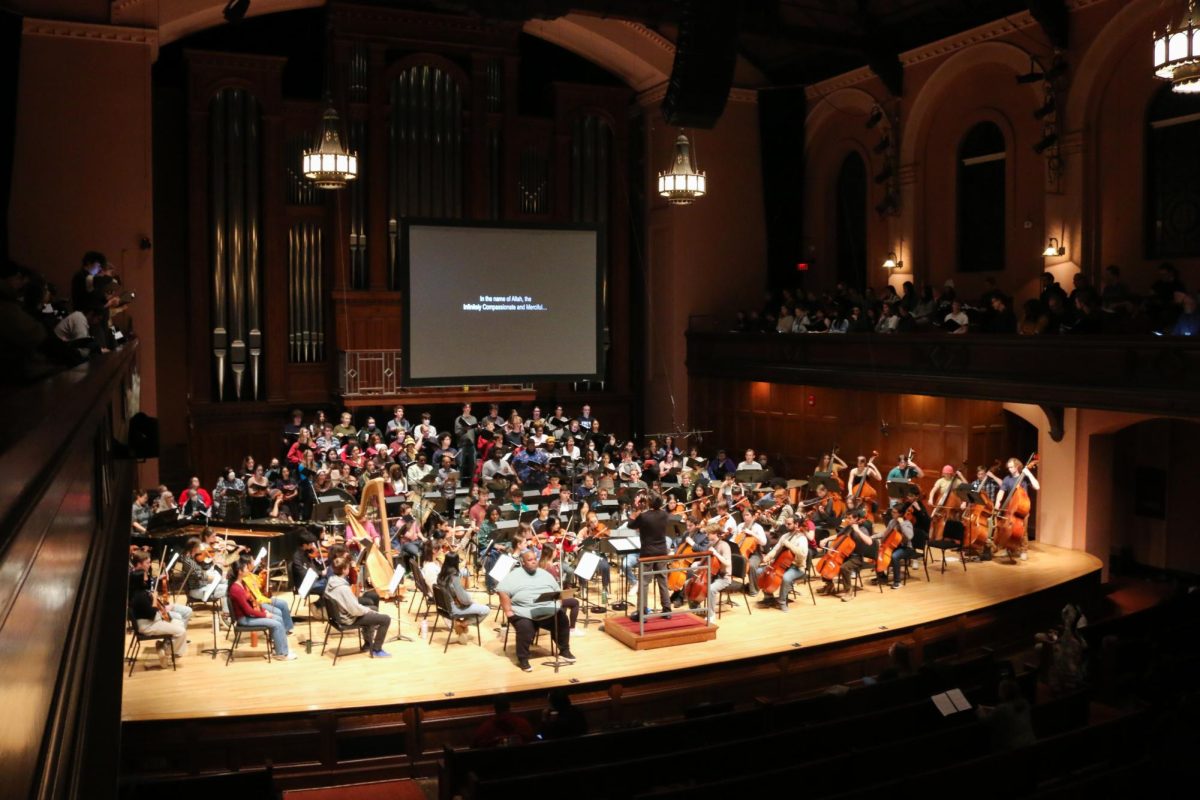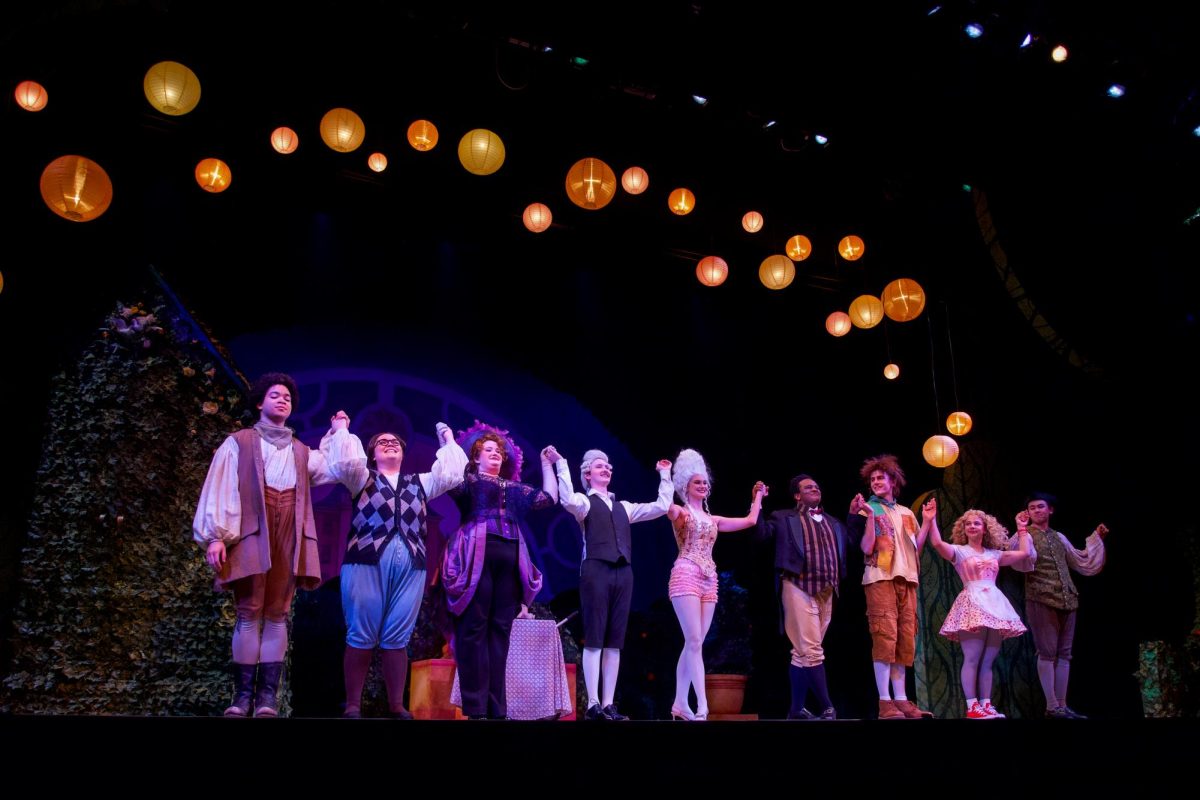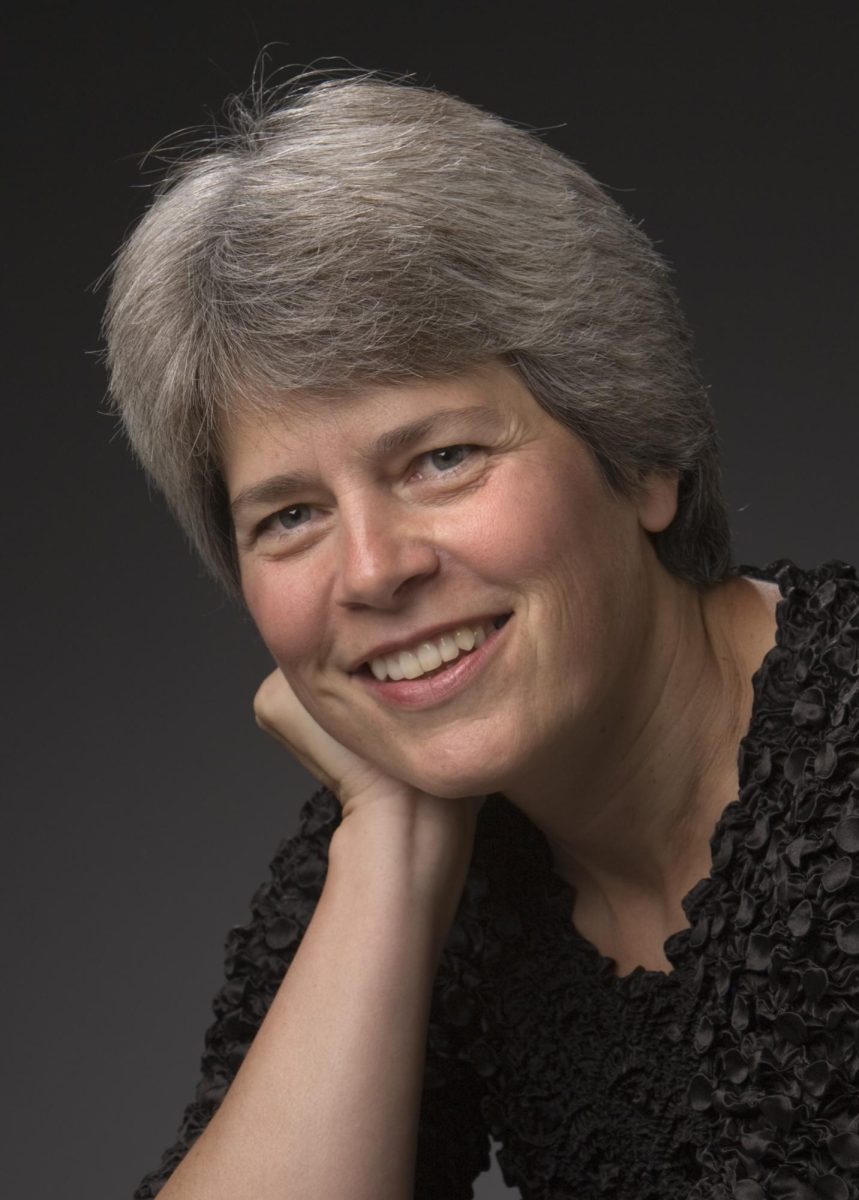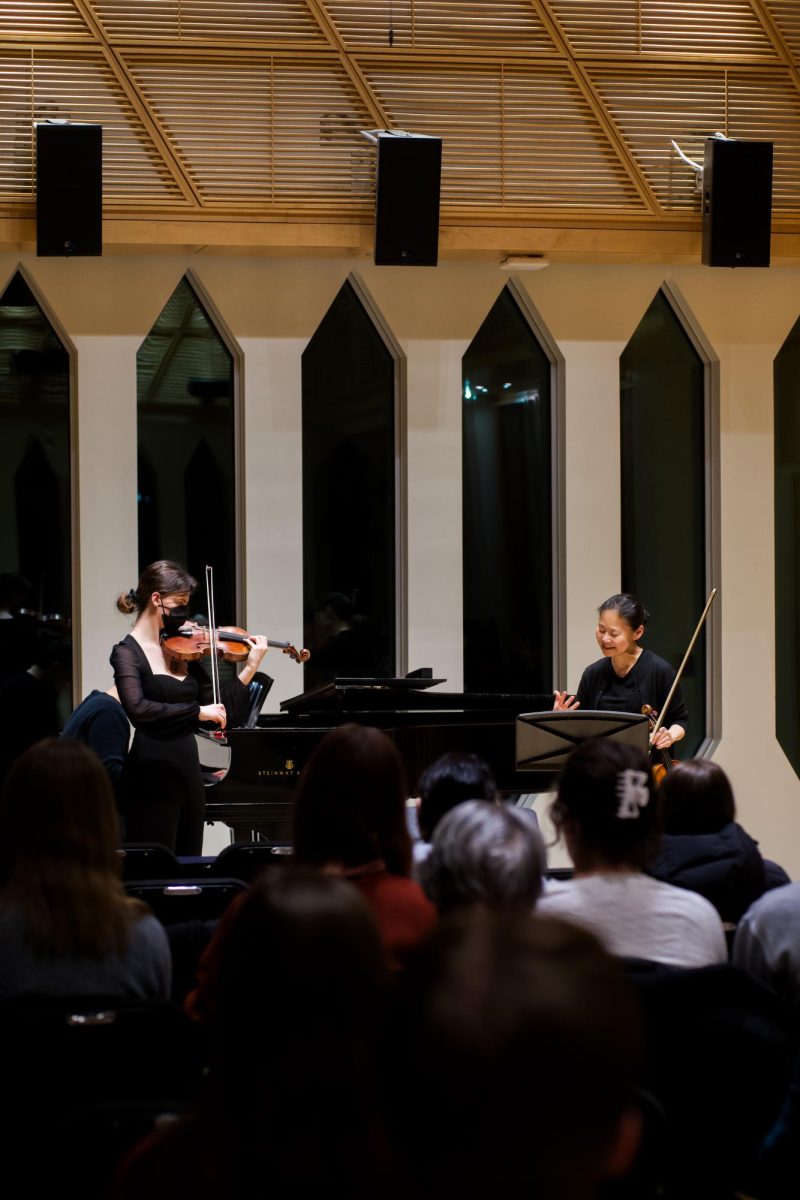Tonight, Dec. 6, at 7:30 p.m. in Finney Chapel, is the sold-out concert production of Rhiannon Giddens, OC ’00, and Michael Abels’ Pulitzer Prize-winning opera Omar, which has received critical acclaim since its world premiere in 2022 at Spoleto Festival USA.
Not only does this performance unite the Oberlin Orchestra, Oberlin College Choir, Musical Union, and Gospel Choir under the direction of Guest Conductor John Kennedy, OC ’82, it also welcomes back alumni who have made distinct careers in the world of opera for a unique collaboration between students and professionals.
Alumni taking the stage include composer, librettist, and soprano Giddens; tenor Limmie Pulliam, OC ’98; baritone Michael Preacely, OC ’01; bass-baritone Daniel Okulitch, OC ’99; and tenor Daniel McGrew, OC ’15. Mezzo-soprano Krysty Swann, who previously performed with the Oberlin Orchestra’s production of R. Nathaniel Dett’s, OC 1908, The Ordering of Moses in 2022, will also take the stage as a special guest.
The performance will result in Omar’s first production with an orchestra of this size, taking on a new life and sound while still respecting and remaining faithful to its compositional origins. A second performance will be held in Cleveland on Sunday, Dec. 8, at 7 p.m. in the Maltz Performing Arts Center.
Omar is a culturally rich and deeply moving work that pulls its inspiration from the life of Omar ibn Said, an educated Muslim man kidnapped from Africa at age 37 and sold into slavery in South Carolina. Ibn Said preserved his story in an autobiography authored entirely in Arabic while he was enslaved at the Owen plantation in Fayetteville, NC; in the opera, there is much dialogue on the nature of religion, as ibn Said’s slave owners attempt to convert him to Christianity.
“The opera tells the story of his journey — but also his spiritual journey as he was confronted with the challenges of being enslaved and the challenge of being asked to give up his spiritual identity as well as his freedom,” Abels said in an interview with NPR.
Giddens’ and Abels’ adaptation of ibn Said’s life story to the stage creates a new, accessible way for audiences to experience operatic works while simultaneously confronting a deeply American issue in a profoundly creative way.
For Oberlin students, rehearsing and placing together the pieces of Omar has been an enriching experience to their musical breadths.
“It’s the type of music that we don’t typically get to play,” fourth-year Aria Messina, concertmaster for Omar, said. “And if we do, we’re usually in a pit where we are just in the background of what’s on the stage. Now that everybody’s on stage, the music becomes the atmosphere. We get to express that stylization for everyone.”
Messina’s leadership role has been something she said was rewarding and impactful, especially as a concert of Omar’s size takes large efforts of communication across the stage. Her sentiments are reflected across the leaders of other sections, too.
“I think it’s a very good thing for Oberlin to do,” double-degree third-year principal violist William Mathangani said. “We have all these symphonies and operas that we play, but I feel like this is just very good for us.”
Mathangani’s work on viola for Omar is apparent through the compositional motifs laid throughout the opera, in which the viola is given many opportunities to contribute to the story in varying ways.
“Starting and ending the opera with viola was intentional; it’s used as a tool to show where Omar is in the story at the time,” Mathangani said. “And sometimes it’s not the singing that gets to you, it’s how the whole notes are played and come together with everything else. The viola has that perspective.”
A spotlight is given to the African and world instruments originating in the percussion section. Double-degree fifth-year percussionist Nathaniel Valsania leads his section and alternates between djembe, frame drum, and darbuka, which all blend and support the themes of the opera.
“I started learning South Indian, Cuban, and West African music about three years ago, and now to be trusted with these parts it feels like a great culmination of the work I’ve done in that and the classical major,” Valsania said. “So it was really serendipitous to do this in my final year, kind of marrying these worlds in an important piece.”
The process of programming Omar was no small feat, as preparation and the build-up to Oberlin’s performance was a carefully constructed and dedicated effort on the parts of Oberlin’s administrators, faculty, alumni, students, and community members.
“The specific idea came about really through John Kennedy, the conductor,” Dean of the Conservatory William Quillen said. “We were really working on it all of last year, so we had a big Zoom meeting with Rhiannon and others to talk and plan it through; we put in place the core creative team here. We knew that it’d be John conducting because we knew that [Ruth Strickland Gardner Professor of Conducting and Director of Oberlin Orchestras] Raphael Jiménez would be on sabbatical, and [Jiménez] was just so supportive from the get-go, and said ‘Absolutely, this should be programmed.’ It was just this alignment of so many things that just came [together] beautifully. All of our faculty — Maestro Jimenez, [Associate Professor of Conducting and Director of Vocal Ensembles Gregory] Ristow, [OC ’01], [Associate Professor of Jazz Voice La Tanya] Hall, Professor [of Voice and Director of the Vocal Studies division Timothy] LeFebvre — have been nothing but supportive and extraordinary in seeing this project through and helping realize it.”
The weekend will also feature many Omar-themed events, the first of which is an exhibit at the Conservatory Library called “Sounding Muslim in the Early Americas,” which has been up since Dec. 2 and will continue to be available to the public until Dec. 11. The exhibit features Transatlantic string instruments, including a banjo, banjo ukulele, and kora, accompanied by literature on slavery in Ohio and the enslavement of Muslims.
On Dec. 5, students had the opportunity to attend a lecture-demonstration by Seckou Keita, a kora player nicknamed “the Hendrix of the Kora,” and considered “one of the finest exponents of the kora.” His breadth of stylistic and global performance on this traditional West African plucked string instrument has earned him international fame. He was joined on the Cat in the Cream stage by Associate Professor of West African Drumming Weedie Braimah, Talise Campbell, Visiting Assistant Professor of Africana Studies and Dance Thomas Prestø, and students of the Djembe Orchestra class. He will also perform as part of the Artist Recital Series Dec. 7 at 7:30 p.m. in Finney Chapel. Later Thursday night, the Oberlin Contra Club led an contra dance at which Giddens spoke.
Between the shows on Friday and Sunday, Saturday will feature a plethora of Omar-related events. Associate Professor of Africana Studies and Comparative American Studies Meredith Gadsby, Chair of Africana Studies Charles Peterson, and Assistant Professor of History Caroline Wood Newhall will have a roundtable discussion at 10 a.m. in Dye Lecture Hall titled “Narratives of Enslaved Individuals.” At 1:30 p.m., Assistant Professor of Music Theory Christa Cole, OC ’17, Associate Professor of Music Theory Andrew Pau, and Visiting Assistant Professor of Music Theory Sylvie Tran will lead a music theory panel discussion called “Expressions of Identity in the Music of Omar.” At 3 p.m., Giddens will be a part of a panel discussion titled “Performance Practices for Black Productions” with Professor of Theater and Africana Studies Caroline Jackson-Smith and Assistant Professor of African American and African Diasporic Musics Courtney-Savali Andrews.
The Allen Memorial Art Museum is hosting two Object Talks Saturday, one at 11 a.m. and one at 1 p.m., discussing the works “no world” by Kara Elizabeth Walker and “Give Me Liberty or Give Me Death” by Annabel Daou. The discussion will be led by College second-year Anka Chiorini and College third-year Audie Wilson. Chiorini is preparing to present Daou’s work, a piece which features the Patrick Henry speech of the same name transliterated into Arabic, then torn apart and reassembled out of order, touching on themes of language and Arabic identity in the opera.
“I think that that quote has such a mythology in America now, even if we’re not quite interpreting it right,” Chiorini said. “And so then to take that and transliterate it, so it’s not even readable in Arabic, and it’s not readable in English, and to just kind of add to all this confusion is really interesting, especially since it’s from 2005, so it’s in the wake of the invasion of Iraq and 9/11.”
Wilson chose to present on Walker’s “no world,” an intaglio print that uses a masterful sugar lift technique to depict a slave ship crossing the Atlantic, carried by black hands reaching out of the waters.
“Kara Walker is really famous for bringing up imagery from slavery and specifically implementing them into Victorian silhouettes,” Wilson said. “Some of her most famous pieces are ones where she’s picking apart visual Black stereotypes through these Victorian silhouettes cutouts and these larger scale scenes in rooms that show different violences of slavery. Her influence in general was something I was considering when I was deciding on this one. Also, it’s quite large, and so it’s pretty easy for people to see, and I think there’s a lot to talk about with imagery. … I really enjoyed the use of the hands. There could just be a ship, and this creates agency in the action of a ship crossing the water.”
Chorus members performing in Omar have had the opportunity to have dialogue with Chiorini and Wilson about these pieces, bringing new insights on both fronts, and emphasizing the multidisciplinary nature of a huge opera like Omar, despite the stripped down production value of Oberlin’s production, which has not decreased the effort and logistical heavy lifting Oberlin faculty have put into the production. Hall, who has worked primarily with Gospel Choir singers depicting the Senegalese people who influenced ibn Said’s early life, described some of the work that goes into staging something this big.
“It’s always a significant challenge, putting on an opera of this scale,” Hall said. “This is a large-scale production. We have a choir of 150, comprising members of College Choir, Musical Union, and the Gospel Choir here at Oberlin. In addition, we have the conductor who conducted the San Francisco Opera production, and I believe, a couple of other productions of Omar along the way, so he knows this music inside and out, and it’s been such a gift that he’s been able to come here and work so intimately with our orchestra.”
In addition to that, this particular production is unique for Oberlin.
“It’s unique in many different ways,” Hall said. “One of the biggest ones is it’s written by an African-American woman who is very acclaimed in the music world, and she’s an Obie graduate, so it’s a bit like family coming home to put on this production. It uses elements not only from the opera world, but also elements of traditional African music, elements of gospel music, and music that would have been relevant to the time period which we are depicting. In addition, it’s wonderful that a story is being told in the opera world that represents a little of the unknown history during slave times. And it’s beautiful that the story is being told by a woman of African descent who is doing honor, not only to the story but to the music. … It’s a great honor that Oberlin is the first [college] to put on a stage reading of this. I feel that this is monumental for the school.”





